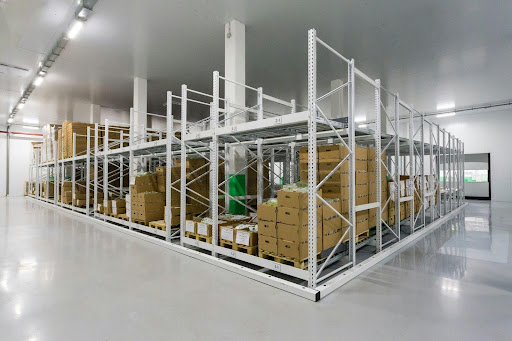A Go-To-Market (GTM) organization may find it beneficial to invest in a Data Warehouse (DWH) alongside their Salesforce CRM when they encounter specific indications that their data and analytics requirements have surpassed the analytics and reporting capabilities of Salesforce.
Applied AI
Data Analytics
Data Engineering
.png)
If your organization relies on data from various sources beyond Salesforce, such as product data, marketing platforms, external databases, APIs, or custom applications, and you need to consolidate and analyze these diverse data sets together. A data warehouse offers more flexibility if you blend data from different sources.
If your analytics needs go beyond standard reporting and require complex calculations and custom metrics, possibly utilizing predictive analytics (machine learning). Here are some examples:
.png)
If multiple teams within your organization (e.g., sales, marketing, product, finance) need to collaborate on complex analyses involving different data types. Some examples:
If your organization needs to generate external reports for regulatory compliance, industry standards, or customer demands, an automated data warehouse provides more control over the formatting, aggregation, and delivery of data.
If your GTM organization has ambitious plans for future growth, innovation, and expansion of data-driven initiatives, a data warehouse can offer the scalability and flexibility needed to support these endeavors.
If any of the scenarios above sound familiar, and your organization grapples with temporary manual solutions to fulfill these objectives, it's a clear sign that you're outgrowing Salesforce's capabilities. At 205 Data Lab, we recognize that your GTM journey may eventually surpass Salesforce's capabilities. When that pivotal moment arrives, we stand ready to assist you in seamlessly transitioning to a data warehouse solution that aligns with your evolving needs.
Data Analytics
#Data Warehouse

Part of the Data Leaders Uncovered series.
Read Post
Featuring Russ Felker, CTO and logistics technology leader
Read Post
Salesforce migrations aren’t one-off events—they recur every few years.
Read Post
Most supply chains generate enormous amounts of operational data, yet very little of it translates into daily decision clarity.
Read Post
Part of our #DataLeadersUncovered series — conversations with data and analytics leaders shaping how organizations use data to drive results.
Read Post
Healthcare has no shortage of data. Electronic health records (EHRs), claims data, insurance premiums, and financial systems generate enormous volumes every day. Yet despite the promise of AI and advanced analytics, healthcare organizations often struggle to turn that data into action.
Read Post
In this installment of Data Leaders Uncovered, we meet Angelika Kenward, Analytics Manager at a global events and media company.
Read Post
In today’s customer-obsessed world, it’s easy to talk about personalization, omnichannel journeys, and “data-driven CRM.”
Read Post
You don’t usually associate spreadsheets and dashboards with justice. But you should.
Read Post
On March 1, 2025, one of our clients received an unwelcome surprise in their inbox.
Read Post
AI is reshaping industries, but the fundamentals of data remain unchanged. In this conversation with Ashish Mohan, we explore why problem definition and statistical thinking still drive meaningful outcomes.
Read Post.png)
The streaming tv platform Tubi was launched in 2014. Its revenue had reached $150 million by 2019, and by 2023 the revenue was $900 million.
Read Post
In our latest installment of the "Data Leaders Uncovered" series, we sat down with Maxwell Dylla, a data scientist with a background in materials science engineering.
Read Post.png)
We’re excited to continue our "Data Leaders Uncovered" series by sharing insights from Prem K. Narasimhan, a seasoned executive in the global life sciences industry. Prem has been at the forefront of addressing some of the most complex challenges in pharmaceutical research, clinical trials, and data management. This conversation shines a spotlight on how innovation and strategic collaboration can drive meaningful change in the industry.
Read Post
Welcome to the second installment of our blog series, "Data Leaders Uncovered." In this series, we delve into insightful conversations with data leaders across industries, exploring their challenges, innovations, and lessons learned in navigating the ever-evolving data landscape. In this post, we continue our discussions by spotlighting Jared, A Director at W.E. Aubuchon Company; a hardware retailer based in New England.. We discussed the intricacies of managing retail data, the transition to modern tools like Snowflake and Power BI, and the opportunities presented by AI-driven solutions.
Read Post
We’re excited to start our new blog series dedicated to conversations with data leaders. Each post will explore their challenges, innovations, and lessons learned in navigating the ever-evolving data landscape. We will be highlighting challenges they have overcome, pain points and the achievements they take the most pride in.
Read Post
CRM systems have long served as the primary hub for customer data. Platforms like Salesforce and HubSpot excel at tracking customer interactions, managing sales pipelines, and providing basic reporting. These functions have made CRMs indispensable for sales and marketing teams seeking a centralized view of customer relationships.
Read Post
In recent years, the concept of fractional professionals has gained significant traction, especially in tech companies. Fractional executives, such as fractional CFOs, CMOs, and RevOps, provide their expertise to organizations on a part-time or project basis, offering a cost-effective and flexible solution for companies that may not require or cannot afford full-time executives in these roles.
Read Post.png)
Data quality is critical to any data warehouse project. However, it has often been overlooked as businesses focus on immediate value, with increased revenues and decreased costs.
Read Post.jpeg)
In modern data pipelines, continuous data integration and data frequent updates may cause unintended data errors. Blue-green Deployment ensures a final checkpoint for accurate results. In this blog, details are provided on how to implement blue green deployment in a data warehouse project.
Read Post
Companies targeting mobile app publishers can use mobile app data to identify potential customers. This blog discusses using bulk mobile app data for sales outreach.
Read Post.png)
Discover how applied AI can automate tasks and enhance productivity in data analysis. Explore a real life example of Applied AI in report generation.
Read Post

Stay in the loop with everything you need to know.
%203-svg%20(2).png)
.svg)
.svg)
.svg)